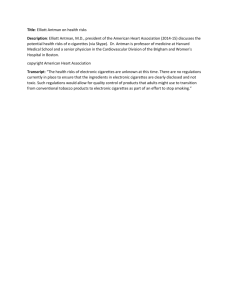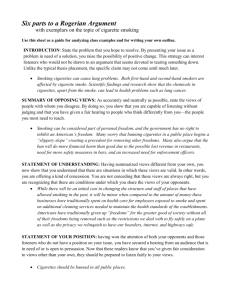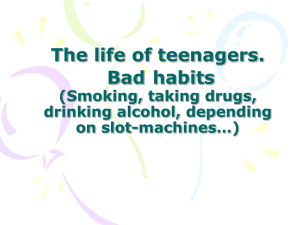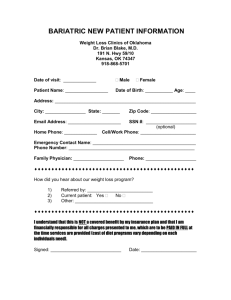Introduction to economics
advertisement
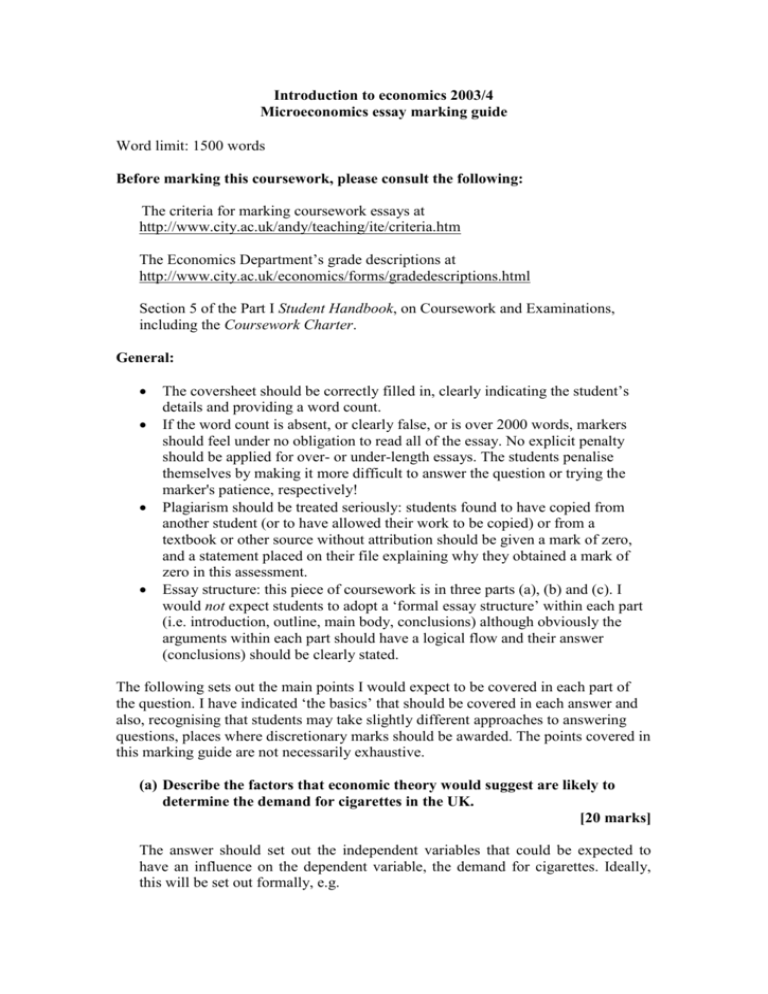
Introduction to economics 2003/4 Microeconomics essay marking guide Word limit: 1500 words Before marking this coursework, please consult the following: The criteria for marking coursework essays at http://www.city.ac.uk/andy/teaching/ite/criteria.htm The Economics Department’s grade descriptions at http://www.city.ac.uk/economics/forms/gradedescriptions.html Section 5 of the Part I Student Handbook, on Coursework and Examinations, including the Coursework Charter. General: The coversheet should be correctly filled in, clearly indicating the student’s details and providing a word count. If the word count is absent, or clearly false, or is over 2000 words, markers should feel under no obligation to read all of the essay. No explicit penalty should be applied for over- or under-length essays. The students penalise themselves by making it more difficult to answer the question or trying the marker's patience, respectively! Plagiarism should be treated seriously: students found to have copied from another student (or to have allowed their work to be copied) or from a textbook or other source without attribution should be given a mark of zero, and a statement placed on their file explaining why they obtained a mark of zero in this assessment. Essay structure: this piece of coursework is in three parts (a), (b) and (c). I would not expect students to adopt a ‘formal essay structure’ within each part (i.e. introduction, outline, main body, conclusions) although obviously the arguments within each part should have a logical flow and their answer (conclusions) should be clearly stated. The following sets out the main points I would expect to be covered in each part of the question. I have indicated ‘the basics’ that should be covered in each answer and also, recognising that students may take slightly different approaches to answering questions, places where discretionary marks should be awarded. The points covered in this marking guide are not necessarily exhaustive. (a) Describe the factors that economic theory would suggest are likely to determine the demand for cigarettes in the UK. [20 marks] The answer should set out the independent variables that could be expected to have an influence on the dependent variable, the demand for cigarettes. Ideally, this will be set out formally, e.g. Dcigarattes = f(Pcigarettes, I, Ps, Pc, preferences, knowledge of risks…) and will include reference to at least the following: price of cigarettes, the consumer’s income, the price of complementary goods, the price of substitute goods, the consumers’ preferences regarding cigarettes, their knowledge of the health risks, etc. There are a number of variables that might additionally be raised (e.g. consumer’s time preference: they may be aware of the health problems associated with smoking, but regard these as happening so far into the future that they do not attach much importance to them). In each case, the variable should be described, and the direction (and magnitude) of its expected affect on the demand for cigarettes discussed. Which goods are substitutes (i.e. have a positive cross-price elasticity) to cigarettes should be noted (e.g. nicotine replacement therapies, like gum or patches; or possibly illicit substitutes such as marijuana – both are substitutes but in different ways). It isn’t obvious what complements exist for cigarettes - maybe matches and cigarettes lighters, and heavy-duty nicotine removing toothpaste and air fresheners! The effect of each variable on the position and slope of the demand curve should be clear from the answer (i.e. an increase in price will move the consumer along their demand curve, with the relative change in Q depending on their PeD; a change in the other variables will affect the position of the demand curve), whether demonstrated in diagrams or not. Overall, the answer to (a) should clearly demonstrate that the student has mastered the ‘basics’ of demand analysis. I fully expect (hope!) that most students will pick up close to 20 marks on this part. Students who have made some extra effort to establish findings in the research literature on, for example, the relationship between income and the demand for cigarettes (or at least discussed the possibility that cigarettes are an inferior good), or on PeD for cigarettes, should be rewarded with discretionary marks. (b) In many countries, including the UK, governments impose sales (‘excise’) taxes on cigarettes. Explain in words, and using appropriate diagrams, the effects of these taxes on the demand for cigarettes. [50 marks] Excise taxes generally take the form of a fixed monetary amount per unit of the good (as opposed to an ad valorem tax, where the tax is a percentage of the price). I expect most students will analyse the effects of an excise (or ‘specific’) tax . Students who demonstrate the knowledge that taxes may take other forms should be rewarded with discretionary marks. Students should first clearly explain why, for an excise tax, the effect of a tax is shown by shifting the supply curve upwards by a vertical distance equal to the amount of the tax. The effects of the tax that they then demonstrate and explain should include the effects on (i) the equilibrium price (ii) the incidence of the tax on consumers and suppliers and (iii) government revenue. In each case, it is crucial that the student shows an understanding of the fact that the effect of the tax in each case depends on the elasticity of demand and the elasticity of supply. Diagrams demonstrating the effects under different conditions (e.g. elastic demand compared to inelastic demand) should be provided and the differences in the effect of the tax shown and explained clearly. [See figure 3.5 in Sloman for the sorts of diagrams required in this answer]. I suspect most students will focus on the demand side, but at least some discussion should be devoted to the supply side (factors that influence the position and shape of the supply curve). Discretionary marks should be awarded if students discuss economic issues pertaining to the markets for licit vs. illicit drugs e.g. (a) if a large tax is imposed, the demand for ‘black market’ cigarettes may increase; (b) the possibility of substituting illicit drugs for expensive but licit cigarettes. General points with regard to students’ use of diagrams in part (b): Diagrams should be appropriately labelled In addition to showing the affects on the position of the curves, new equilibrium points and relevant areas within the diagram should be marked and explained. The diagrams and what they show need to be explained in the main text of the essay. Good answers to part (b) will display: evidence of the student having done some further reading on the characteristics of cigarettes as a product (e.g. their addictive properties), the price elasticity of demand etc. An understanding of the way in which economic models can be used to generate predictions/hypotheses that could then be tested on ‘real life’ data. (c) In what other ways do Governments intervene in the market for cigarettes? If consumers are well informed and rational, as consumer choice theory assumes, why are such interventions deemed necessary? [30 marks] Other interventions in the market for cigarettes: obvious ones are restrictions on who may purchase (e.g. minimum age); restrictions on where the product may be consumed (e.g. banning smoking in public places); restrictions or bans on advertising (banning TV ads, for example); and mandatory warning messages on packaging. Less obviously, Government may choose instead of taxing or regulating (or as well as), to subsidise products or services that assist consumers to reduce or stop smoking. For example, the NHS now subsidises nicotine patches. [maximum 5 marks for this part of the answer]. The remainder of part (c) is by far the most difficult aspect of this coursework, and you may find a wider range of performance here than on the other parts. The answer to this question should not accept that consumers are well informed and rational, but rather discuss the extent to which this is the case. The key thing students should address in their answer is the basis upon which the consumption of cigarettes in the absence of taxation might be concluded to be 'too high'. Too high relative to what? There are a number of possibilities: 1. Consumers may have imperfect information on the risks of smoking. Of course, if this is the explanation for cigarette consumption being non-optimal, the appropriate response by Government might be to improve information. 2. Consumers have perfect information but, weighing up the benefits (e.g. the enjoyment of smoking) against the costs to them (known and rather substantial risks of premature death and disease), have made a utility maximising decision to smoke. Their attitude to risk will be one factor here i.e., those that choose to smoke may be 'risk lovers' or may also have very high time preferences rates (not care too much about the future). For example, a law banning the sale of cigarettes (and, similarly, alcohol) to those under 16 years must rest on the belief that that this group of consumers are not capable of making decisions that are in their own best interests. Essentially, this group of consumers may be considered to be too ‘myopic’ – focussing on the present, and not taking into account the future consequences of their choices now. Thinking of the law in this way is extremely interesting analytically, since it contradicts the assumptions upon which consumer choice theory is based. Such a judgement must rest on the paternalistic idea that the Government 'knows best' what is good for us, so that overriding consumers' sovereignty is justified. 3. That addiction adversely effects (or altogether precludes) the consumer’s ability to make a utility maximising decision. [Cigarettes contain nicotine, which is highly addictive]. There are various schools of thought on this: on one hand, that addiction means consumers are compelled to purchase the product in question and to make consumer choices that do not maximise their own wellbeing. On the other hand, their decision to keep purchasing cigarettes may be motivated by their desire to obtain utility from consumption (or to avoid the disutility from withdrawal effects) weighed rationally against the opportunity cost of alternative uses of their income [some students may mention the model of ‘rational addiction’]. Although smoking is addictive, thousands of people give up smoking each year, so the presence of addiction does not mean to consumer is powerless to choose. 4. That the consumer does not face the full costs of their decision to smoke cigarettes, so is making a non-optimal choice. This may be raised by students, but raises some quite complex issues. The idea that consumers' decision to smoke - thus raising the possibility of their eventually becoming sick and imposing costs on all taxpayers via the NHS - sounds a bit like an externality argument. Externalities generally arise where there are spill-over costs or benefits from consumption (or production) that are not incorporated into private market transactions. In this case, though, the 'external costs' on taxpayers arise because of an ex ante decision by Government that health care should be funded by taxpayers. If health care was instead paid for by individuals themselves, smokers would have to bear the health care costs of their smoking, and this cost would be ‘internalised’ in their decisions. It could be argued that if they did have to bear all the costs of medical treatment, the probability of bearing these costs would be 'factored into' their initial decision to smoke or not to smoke - and more people might choose not to smoke (or to give up once they’d started). Referencing. After the end of the essay there should be a bibliography. This is not included in the word count. Failure to include it should be severely penalised – Andy suggests 20 marks. I am not particularly fussy about which referencing style students choose to adopt, providing they are consistent; that full details are provided (this applies to websites too) for all material used in their essays; and that there is attribution of all material used.
